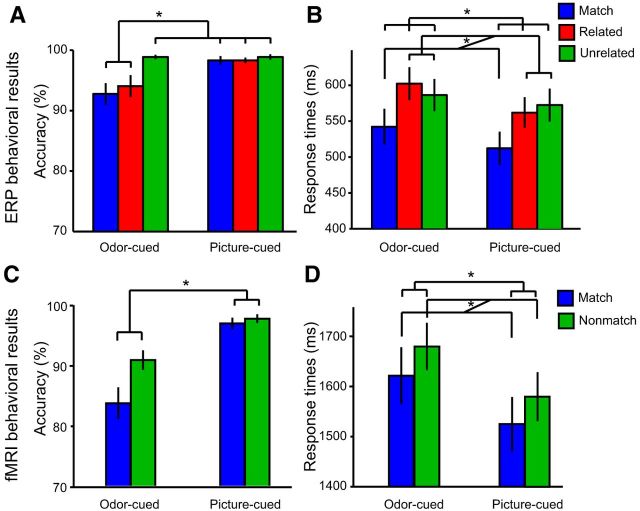Figure 2.
Behavioral results in ERP and fMRI experiments. Cue modality (olfactory, visual) is labeled below each set of bars, and cue–target congruency is indicated by color. Significant comparisons (p < 0.05) are indicated by an asterisk. A, Accuracy (mean ±SE) during the ERP experiment. Lower accuracy on matching and related odor trials, compared with other trial types, showed that participants were more likely to incorrectly reject the odors' names, and to falsely accept the names of other odors from the same semantic category, compared with picture trials. B, Response times (mean ± SE) in the ERP experiment were slower on odor trials than on picture trials and on nonmatching (related and unrelated) versus matching trials. C, In the fMRI experiment, accuracy was also lower on odor-cued compared with picture-cued trials. D, RTs in the fMRI experiment were slower on odor than picture trials and on nonmatching versus matching trials.

